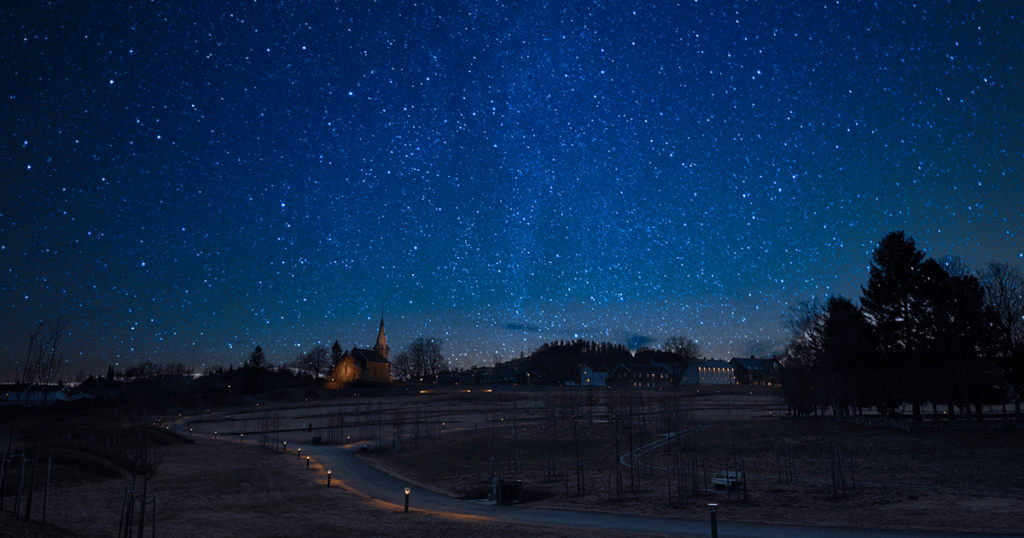
Más is Spanish for “more,” and it takes a tilde, a written accent, although its look-alike, mas, which means “but,” does not. Usually a tilde tells you what syllable to stress, but with these two words and some other pairs, the tilde simply tells you you’re reading the one and not the other. Sí is “yes” and si is “if.” Sólo is “only” and solo means “alone.” The tilde in these cases doesn’t change the pronunciation, and keeping straight which of the two takes the mark is a matter of memory. A guiding rule could save you trouble. But what rule? Often I’ve found that rules befuddle the brain and illuminate nothing, except perhaps that you’re going to have to memorize more than you want to. Other rules are so cumbersome—more descriptive than prescriptive—that you drop them and go on without. Some rules do illuminate, but illumination isn’t always the be all and end all, even when it brightens dark corners.
In truth, sometimes you’d be better off in the dark, feeling your way but more attuned to your surroundings. This is the case in Magdalena, New Mexico, a small town south of Albuquerque and west of Socorro that I know because my mother lives there. In Magdalena, in an area known for its dark skies, streetlights that light up the vulgar reality at our feet while thinning the heavenly darkness above are more limiting than illuminating. This is especially true for members of MAS, the Magdalena Astronomical Society, several of whom were at a village board meeting this spring when a resident petitioned to have a new streetlight installed beside her mother’s house, where it was dark. The board voted no, and the astronomers went back to the Lyceum, the astronomical museum and de facto headquarters across the street from the house in question, relieved. Dark, for these astronomers, is like water for fish, and though these stargazers appear quite ordinary during the day, I believe they slip into the night as a fish that’s been caught and released will sink back into a deep pool—with a shudder and a wiggle, free again.
The building that houses the Lyceum is a 1936 WPA construction, originally a school gym, then a boys’ and girls’ club, and then the London Frontier Theatre, until that closed half-a-dozen years ago. As a bit of history itself, and considering the earlier purposes of fun and games in the gym, the club, and the theater, the building seems perfect for the Astronomical Lyceum, a museum-cum-library-cum-classroom, a building of much possibility for an institute of many purposes. It is full of sofas and armchairs, desks and tables, shelves holding old books and worn journals saved from institutions cleaning out their basements, odd shiny instruments and dully gleaming ones, artifacts big and small, each, so I’ve heard, with a story if you’ll give John Briggs, the owner of the collection, the opportunity to tell you. Enormous telescopes are aimed this way and that for seeing stars, though I’d think the grander subject for scrutiny is the seas of time and space between the stars. Folding chairs for meetings, a screen for presentations, rugs underfoot and original floorboards under the rugs. On the walls, photos of the stars. It’s a large, airy space, surprisingly cozy. When I saw it, I looked around, loving it all, but I loved best the wooden desks and tables and the cushioned sofas and the floor lamps arching over the armchairs. Which of the sofas would I choose, and where would I set a drink? What book would I pull from the shelves, and how would I understand what I read?
In Spanish, when used in questions or exclamations, all these question words, when, which, and where, what and how, take a tilde. Why? To signal a question is one answer, but another answer is because that’s just how it is.
Why—por qué—takes a tilde too, whether the question is about grammar or something bigger, like the reason for everything, or the origin of everything, or the end awaiting all things. I tend to think such answers will remain in the dark, and maybe astronomers think so too, which explains why they hang out there, in the dark, drinking it up like a secret elixir to cure the ills of the day and prolong life. The dark may even have a taste and a texture. But if you can’t detect these qualities, don’t feel bad. Though stars are best seen in the dark, other things, the marks that make meaning on a sheet of paper, for example, including the tilde, are best seen in the light.

